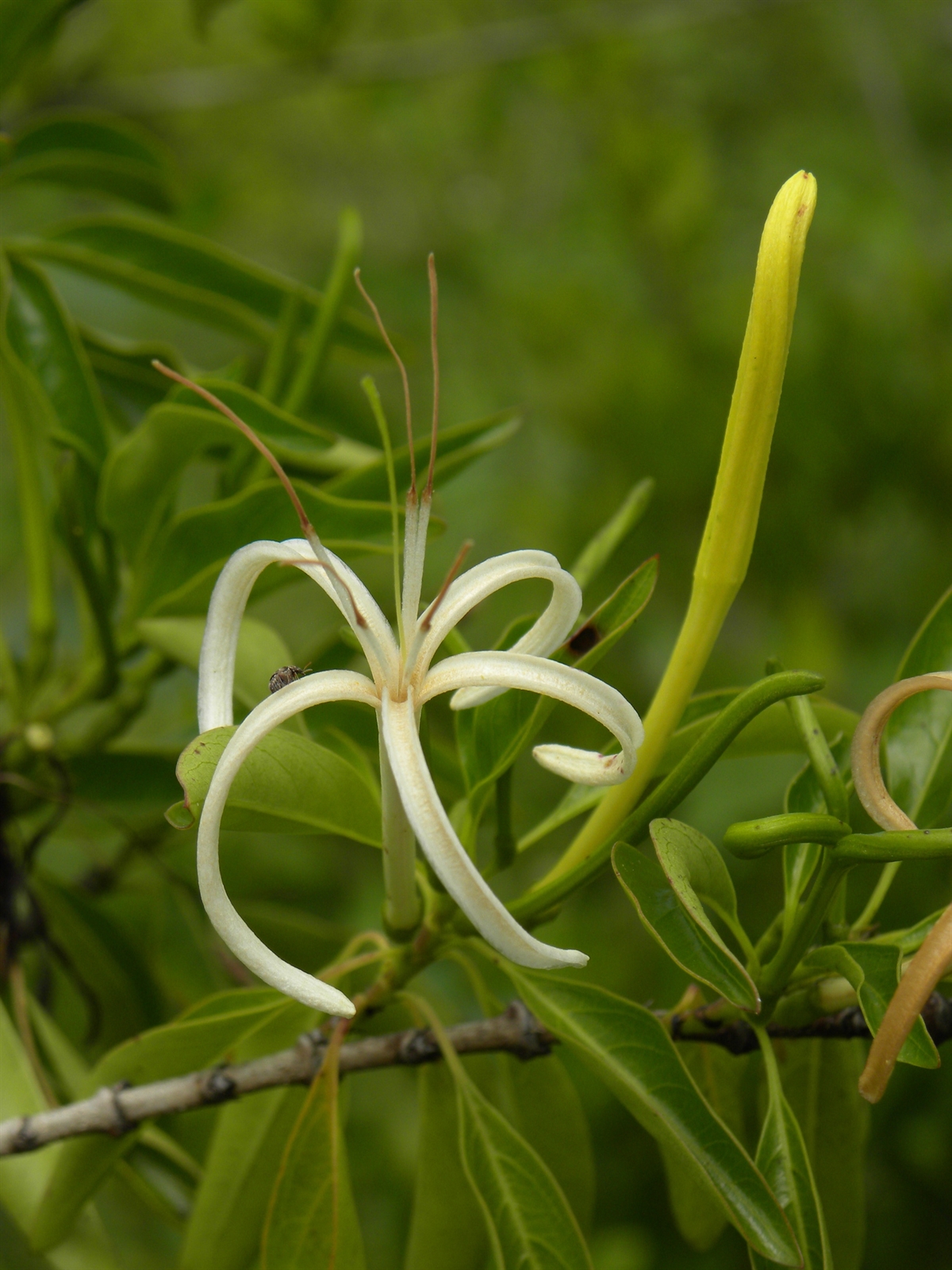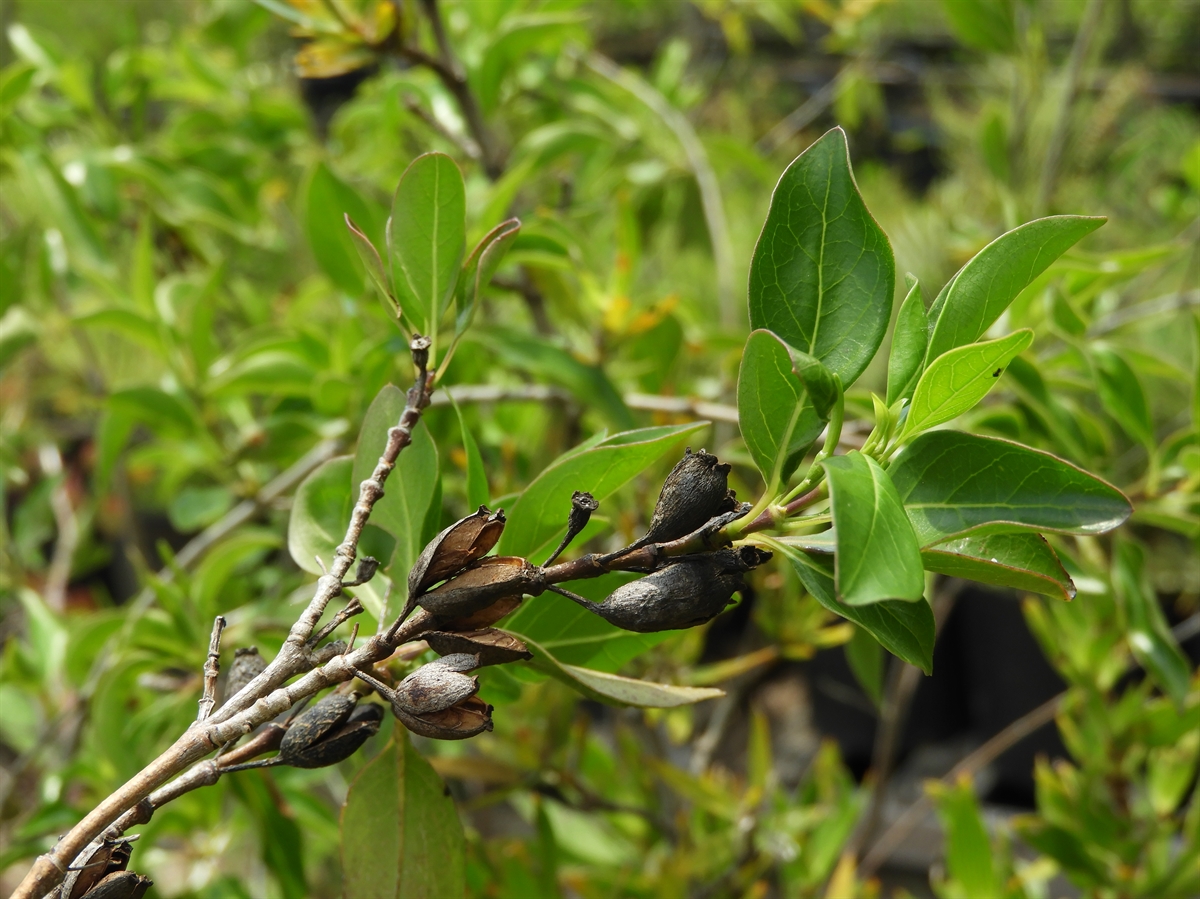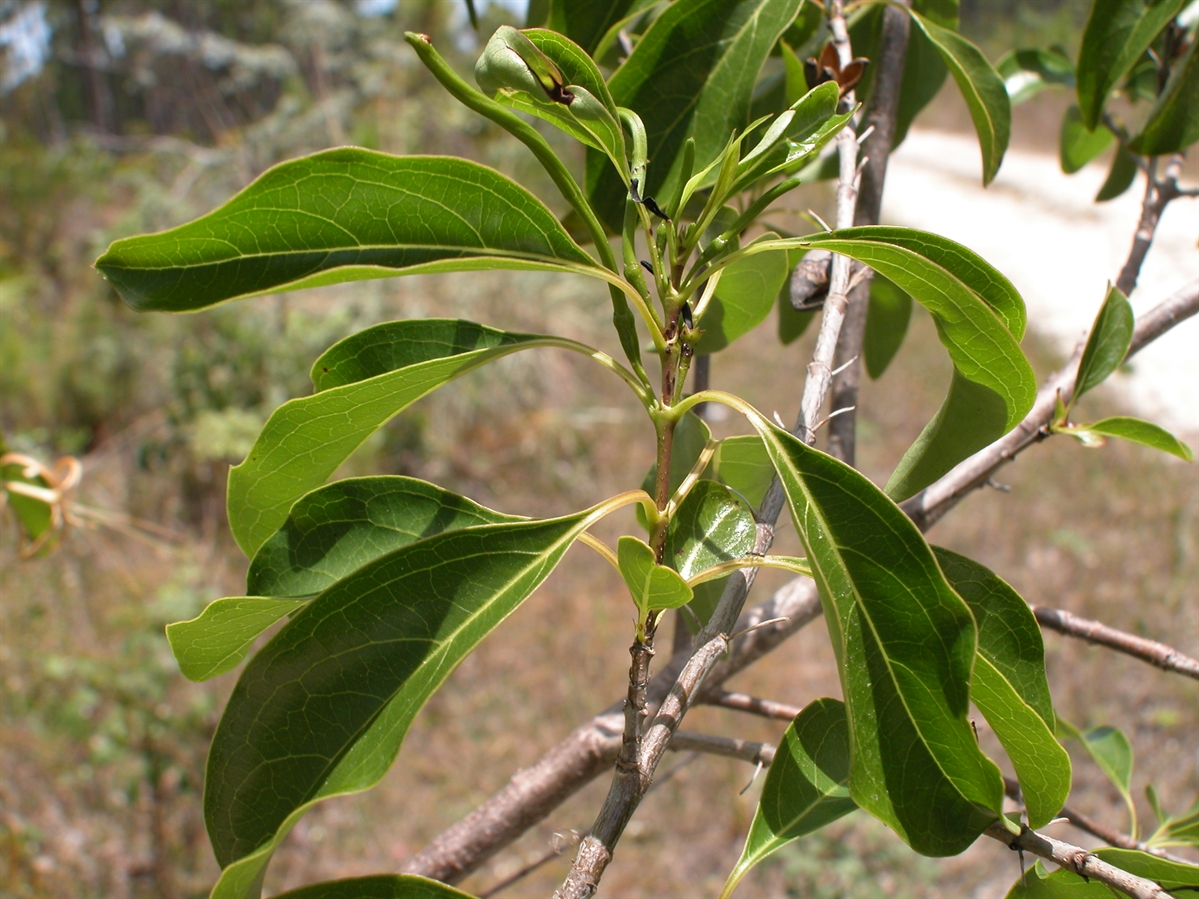Habit: Exostema caribaeum grows as a slender shrub to small tree up to twelve meters in height. The bark is grayish in color and develops horizontal fissures with age. The leaves are arranged oppositely and are up to 12 centimeters long. The leaves are lanceolate in shape with slightly undulating but entire leaf margin. Between the opposite leaves, there is an interpetiolar stipule.
The complete, perfect, actinomorphic, solitary flowers occur in leaf axils. The calyx and corolla are fused at their base into a hypanthium. The calyx is 5 lobed, cylindrical, 0.5 centimeters in length, and greenish. The corolla is white (turning orange brown with age), salverform in shape, and produces an extended tube that is 5 or more centimeters long with 5 elongated lobes. There are 5 stamens fused to the top of the hypanthium. The ovary is inferior. The fruit is a brown capsule that opens along suture lines. The capsule produces many dark colored, winged seeds up 0.5 centimeters in length.
Habitat: Exostema caribaeum grows on a solid limestone substrate in Dry Broadleaf Evergreen Formations (coppice) as well as in Pine Woodlands.
Distribution: Exostema caribaeum occurs on all islands within the Lucayan Archipelago as well as rest of the Caribbean region, Florida, Mexico and Central America.
Medicinal/Cultural/Economic usage: Exostema caribaeum bark extracts are used in the Lucayan Archipelago to treat issues of anemia, diarrhea, hemorrhoids, to increase appetite, low blood pressure, stomach aches, and ring worm. It is also used in general strengthening teas. Extracts from the bark have been used to treat fevers especially those related to Malaria. Extracts from the bark have been mixed with alcohol to increase the level of intoxication.
In other areas of the Caribbean a related species E. santae-luciae has been used to treat women after giving birth to clear the womb of the placenta.
Given the large fragrant, showy flowers Exostema caribaeum is now used in the horticultural trade.


